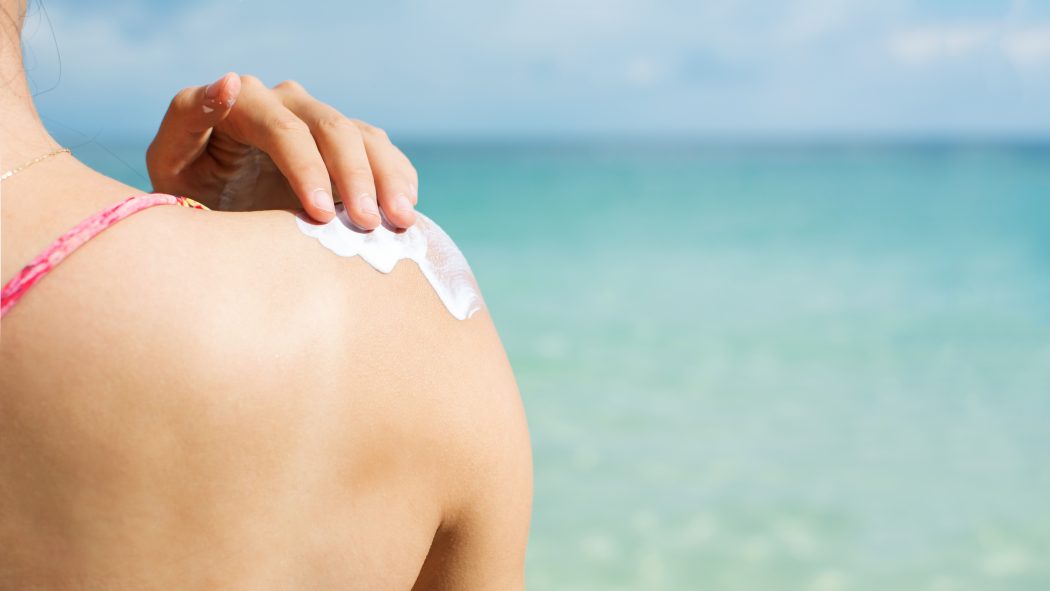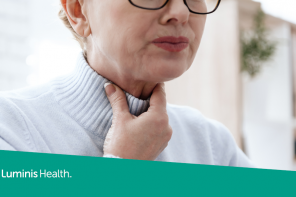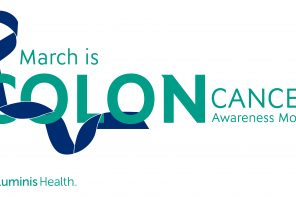Summertime generally means more time spent outdoors, under the sun and wearing less clothing. As we expose more of our skin during the hot summer days, we are also exposing ourselves to an invisible danger — ultraviolet (UV) radiation. Too much summertime fun can be a good thing, but too much sun… well, not so much!
There are three types of ultraviolet rays: UVA, UVB, and UVC. Ultraviolet C (UVC) does not reach the earth, so it does not affect our skin health. However, both Ultraviolet A (UVA) and Ultraviolet B (UVB) get through the atmosphere. UVB is associated with sunburns leading to redness, swelling, pain and sometimes blistering. Sunburns significantly increase the risk of developing skin cancer. In fact, more than five sunburns as a child can double your risk of developing skin cancer later in life.
Damage from UVA exposure, a deeply penetrating ray that can cause the greatest amount of damage to skin cells, can alter the DNA of the skin cells leading to the deadliest form of skin cancer — melanoma.
A tan is always a sign of skin damage. According to the Centers for Disease Control and Prevention (CDC), tanning is the skin’s way to show it’s injured. Skin cells show that they are damaged by producing melanin (additional skin pigmentation). Indoor tanning is particularly damaging because you receive a more intense amount of UVA radiation — as much as 12 times that of the sun, according to the Skin Foundation. Twenty minutes in a tanning bed can equal a full day at the beach in terms of UV radiation exposure!
READ MORE: The ugly side of tanning
Did you know that your eyes could also be sunburned? A painful condition known as photokeratitis can include redness, sensitivity to light, a gritty feeling in the eyes and tearing. Excessive, repeated exposure to UV rays can also lead to melanoma of the eye and cataracts. Research has also found that UVA and UVB exposure can suppress the immune system.
Although UV rays tend to be stronger during spring and summer months (when we are closer to the equator), it is good to always protect your skin and eyes — even when it’s cloudy. Here are a few steps to take to protect your skin everyday:
- Slip! Slop! Slap! : The American Cancer Society advises to slip on a shirt, slop on sunscreen and slap on a wide-brimmed hat. Of course, do not forget to wrap on UV-blocking sunglasses to protect your eyes and the sensitive skin around them. Use a broad-spectrum sunscreen with at least 30 Sun Protection Factor (SPF), which will screen out 97 percent of the sun’s UVB rays and will also protect against UVA radiation. Apply approximately two tablespoons 30 minutes before going outside. Reapply every to two hours, especially if swimming or perspiring.
- Seek shade: This is an obvious one, but still equally as important. Practice limiting your exposure to UV light or being outdoors in direct sunlight for too long, particularly between the hours of 10 a.m. and 4 p.m., when UV light is strongest.
- Avoid tanning beds and sunlamps: Dermatologists and health organizations recommend against using these methods to tan. In fact, they recommend other sunless tanning products that don’t pose a threat to your health.
- Watch for abnormal moles: Check your skin regularly to spot any new or abnormal moles or other growths. Schedule a visit with your doctor as soon as you spot one and have a yearly routine skin exam. Remember the ABCDEs of skin checks:
Asymmetry: One half does not match the other half.
Border: Uneven or poorly defined border.
Color: Color varies from one area to another.
Diameter: Any skin spot or lesion larger than a pencil eraser.
Evolving: A mole or skin lesion that is changing in size, shape or color.
READ MORE: Skin cancer screenings: What to look for
If you see any new or suspicious spots on your skin, or any spots that are changing, itching or bleeding, make an appointment to see your health care provider.
Taking the right steps to protect your skin and checking your skin regularly can significantly reduce your risk of developing skin cancer or help detect it early when it is most treatable. So enjoy yourself in the outdoors while staying protected from the sun’s rays year-round!
 Joanne Ebner is a cancer prevention program manager at Anne Arundel Medical Center (AAMC). You can reach her office at 443-481-5366/67.
Joanne Ebner is a cancer prevention program manager at Anne Arundel Medical Center (AAMC). You can reach her office at 443-481-5366/67.




